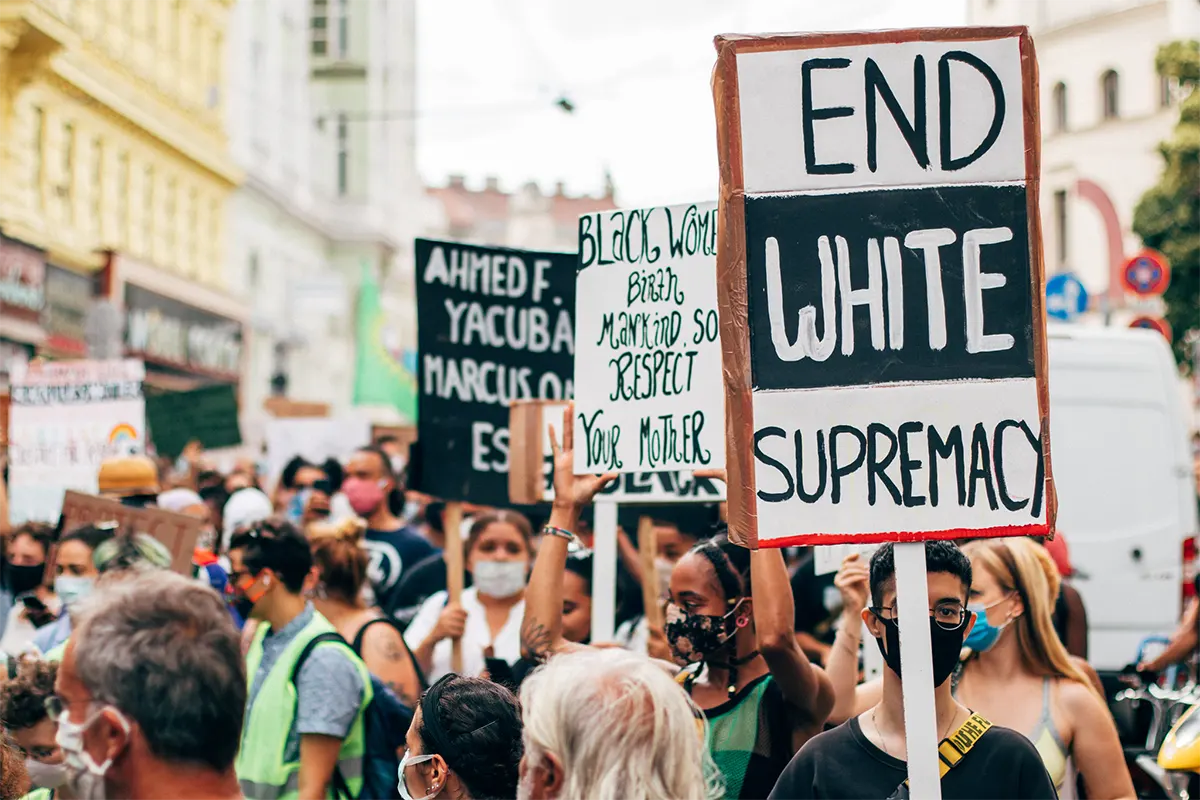The year was 2011. I had crossed over into my eighteenth year of life and was one month into legal “adulthood.” I was spiritually curious and in pursuit of unlocking the mysteries of the universe with entheogens and synthesized psychedelics. I was antsy (but perhaps not spiritually prepared) to exercise my new freedoms to the fullest extent possible. I’d worked two jobs in high school and used my savings to get to Burning Man for the first time in 2011, the year themed as Rites of Passage.
It was there that I consumed a substantial first-time dose of TC-B or TC-E (amusing how easy it is to mix those up by a letter) one eve and experienced a series of supernatural events on a dancefloor populated by mystics, bohemian artists, and ravers alike, dancing timelessly to global bass, worldbeats, and experimental dubstep throughout gusts of dusty wind and into the miraculous sunrise. The DJ booth was seashell-like, its facade decorated with psychedelic visionary art of trees and root systems. Later, I’d learn that some of the producers and DJs that performed that night (Gaudi, Ill Gates, Imagika Om, Mimosa) were known for innovating their styles, fusing world music and mantras with heavy bass.
Among the medicine, the music, the desert ecosystem, and the people, I had auditory and visual hallucinations as the tree and root imagery decorating the DJ booth began to resemble the bodies of brown, Indigenous femmes wailing in grief from violence during the early stages of European colonization. I was metaphysically still on the dancefloor dancing to the music, yet simultaneously witnessing a hallucination of our collective historical trauma, as if it was happening that very moment. It didn’t help that my personal space to dance freely through a spiritual journey was iteratively encroached by males pressuring embodied, relational engagement with me through dance. I believe what I experienced that night was a Kundalini awakening, where I was becoming spiritually self-aware of new ways to move and express embodied, erotic feminine power through dance, a form of magic. I remember the ongoing necessity of using dance to communicate boundaries, to create a container of protection for myself, and to non-verbally dispel spatial encroachment by males on the dancefloor.
READ: The Dark Side of Festival Culture
It was during this evening of mystical experiences on the dancefloor when I had an epiphany as to how psychedelics and festival cultures could guide peacebuilding processes in contexts of war and armed conflict. I remember deciding mid-dance moves, “Yeah…that’s what I will study.”
I proceeded to explore the healing potential of psychedelic, circus, and festival cultures in my undergraduate studies at UC Berkeley and wrote my first assignment on the potential role of psychedelics in ceremonial processes for transitional justice in geopolitical contexts of armed conflict in 2014 for a course entitled Prevention of Genocide and Mass Atrocities in the 21st Century. One of my assignments for this course was entitled Transitional Justice by Cultural Intervention(s): Invoking Public Memory to Prevent the Reproduction of Violence. Eight years later, in 2022, I wrote a literature review for my capstone thesis to complete a Master of Public Health Program. It was entitled Psychometrics and Biological Markers of Interest for Psychedelic Research on Conflict Transformation and Violence Prevention.
In both undergraduate and graduate academic settings, my exploration of the roles of entheogens/psychedelics in ceremonial processes of historical memory, transitional justice, conflict transformation, and violence prevention has been met with stigma, skepticism, cynicism, dismissiveness, innocent ignorance, and perhaps even discrimination. Despite submitting my capstone thesis to my thesis advisor nearly a year ago, I never received formal or meaningful feedback from faculty at the prestigious institution I studied at. I can’t help but ask myself, “Is this deliberate academic censorship?” or “Is this subconscious white supremacist, institutionalized gate-keeping?” Or perhaps another possibility: “Are my research questions beyond the expertise of faculty at a globally prestigious academic institution that has historically benefited from colonialism, slavery, imperialism, and white supremacy?”
How to Grow Shrooms Bundle
Take Both of Our Courses and Save $90!
READ: Why the “Psychedelic Renaissance” is just Colonialism by Another Name
Despite the silence and academic marginalization I experienced as a graduate student pursuing research in psychedelic-assisted behavioral interventions for the prevention of genocidal violence, I persist onward, with radical love and compassion for life and radical trust in ancestors as the compass. The stigmatization of psychedelic research aimed at challenging colonial ideologies of racial superiority/inferiority and associated violent behaviors is not surprising considering that European colonial regimes of power attempted to completely eradicate Indigenous epistemologies, cosmogonies, and overall cultural traditions through scorched earth tactics of extermination and religious colonization. (There’s a movement song us anti-fascist Jews sing at protests: “We’re gonna rise up, rise up ‘til it’s done! 2x They tried to stop us but we keep coming back! 2x”)
For the most favorable public health outcomes, it’s necessary to build collective historical memory and reckon with how the medicalization of psychedelic-assisted therapy is entangled with the colonial hegemony of Western psychology and Eurocentric approaches to monitoring, evaluating, and treating disease that have historically delegitimatized Indigenous epistemologies (knowledge systems) and cosmogonies (spiritual worldviews). The “field” of psychology was founded by and elaborated by European males in the 18th, 19th,and 20th centuries, many of whom were influenced by Charles Darwin’s theory of evolution (i.e. “survival of the fittest”) and subscribed to social darwinist and eugenicist ideologies of racial superiority/inferiority that justified dehumanization, genocide, and mass atrocities in the 20th century. Francis Galton, Charles Darwin’s cousin, made early contributions to statistics, psychology, and psychometrics (the measurement of psychological traits), among other areas of study. He was also the one responsible for coining the term and ideology of eugenics, rooted in the Greek word eugenes, which translates to good in birth or good in stock. In other words, an early figure that contributed to the foundation of Western psychology and population-based mathematics used today in epidemiology, social, and psychological research is also the individual that developed an ideology that has been instrumental in justifying and operationalizing historic mass violence on populations deemed undesirable, geopolitically colonized or formerly colonized populations. Oksana Yakushko traces this, uncovering how the ideology and practice of eugenics, or the “science of racial betterment” became popular among British and US psychologists throughout the 20th century and into the present.
While enrolled in a graduate seminar on gun violence last year, in the wake of the white supremacist massacres at the Tops grocery store in a Black community in East Buffalo, NY and a predominantly Latinx elementary school in Uvalde, TX, I struggled with how racially-motivated domestic extremist violence was not treated the same way other diseases are treated in epidemiology, the “science of public health.”
Epidemiology, rooted in Greek for “the study of what is upon the people” or “the study of epidemics” is the study of the presence and spread of disease or disorders among a population of people—the incidence, prevalence, risk factors, determinants (of health outcomes), mortality rate, and rate of transmission commonly applied to infectious disease to implement strategies for disease surveillance, mitigation of transmission, prevention, and treatment.
During late night candle-lit study sessions, I recall feeling a sense of eeriness over how racial, ideological, hate and bias motivated violence—the kind of violence that drives historic mass violence like mass shootings—was not studied in the same way other diseases are. The literature review (forthcoming) that I wrote last year, in consultation with MAPS’ Global Impact Officer, Natalie Lyla Ginsberg, MSW, reviews the work of Melissa Yellow Horse Braveheart, Ph.D., Rachel Yehuda, Ph.D., Monnica Williams, Ph.D., Eran Halperin, Ph.D., and Leor Roseman, Ph.D., Margaret Urban Walker, among others, and considers which biomarkers (characteristics of the body that can be measured, or biological indicators) and psychometrics (quantitative psychological measurements) would be key to study in research on psychedelic-assisted interventions for conflict-transformation and violence prevention. My literature review includes the MDMA research study that supported a former white nationalist leader through a transformative experience and is part of emerging dialogue on whether psychedelics can cure genocidal cultures.
I remain attentive to how the legacy of European colonization pervades through the hegemony of Western psychology, academic gatekeeping in the university, and disproportionate US federal spending on militarism over public health. This paradigm of extermination continues to be in tension with Indigenous values, knowledge systems, and basic respect for human and environmental rights.
As stated in the conclusion of my thesis: It is important to acknowledge the limitations of Western, empirical approaches to the public health crisis of genocidal violence, which includes a spiritual dimension. Any psychedelic research endeavor in conflict transformation and violence prevention should be developed through community-based systems dynamics (CBSD), a participatory modeling process where diverse stakeholders and parties to public health challenge convene to transform a public health problem. Through facilitated activities, consultation and cooperation, they map out and form a collective understanding of the health problem and proceed to map out a solution that transforms and remedies the health problem. In any psychedelic research design effort to address racially, ideologically, hate and/or bias motivated violence, we need CBSD for culturally responsive and context specific protocols in research design that are guided by Indigenous, traditional, interfaith, justice movement leaders and elders and survivors of violence, whom are often excluded from psychedelic research design and operationalization. Through CBSD, we can leverage the best of pluricultural ecologies of knowledge, neuropsychopharmacology, and behavioral psychedelics for transitional justice, repair, and collective, intergenerational healing.
Amidst the climate crisis, our collective survival depends on such principles of consultation, consent, and cooperation in approaches to healing the collective wounds of historical trauma-colonization, enslavement, and the ongoing imperialism destroying the planet and jeopardizing collective survival. Let’s join and amplify Defund Hate’s call to divest public resources from militarism and structural, racist violence. We are many who see a future where Department of Defense funds are expeditiously redirected to public health research on psychedelic-assisted behavioral interventions for violence prevention, conflict transformation, transitional justice, and what, in peacebuilding we call, demobilization, disarmament, and reintegration.
Interested in having a psychedelic experience, but don't know where to start? Get our definitive guide on trusted legal retreat centers, clinical trials, therapists, and more.
We started DoubleBlind two years ago at a time when even the largest magazines and media companies were cutting staff and going out of business. At the time we made a commitment: we will never have a paywall, we will never rely on advertisers we don’t believe in to fund our reporting, and we will always be accessible via email and social media to support people for free on their journeys with plant medicines.
To help us do this, if you feel called and can afford it, we ask you to consider becoming a monthly member and supporting our work. In exchange, you'll receive a subscription to our print magazine, monthly calls with leading psychedelic experts, access to our psychedelic community, and much more.



